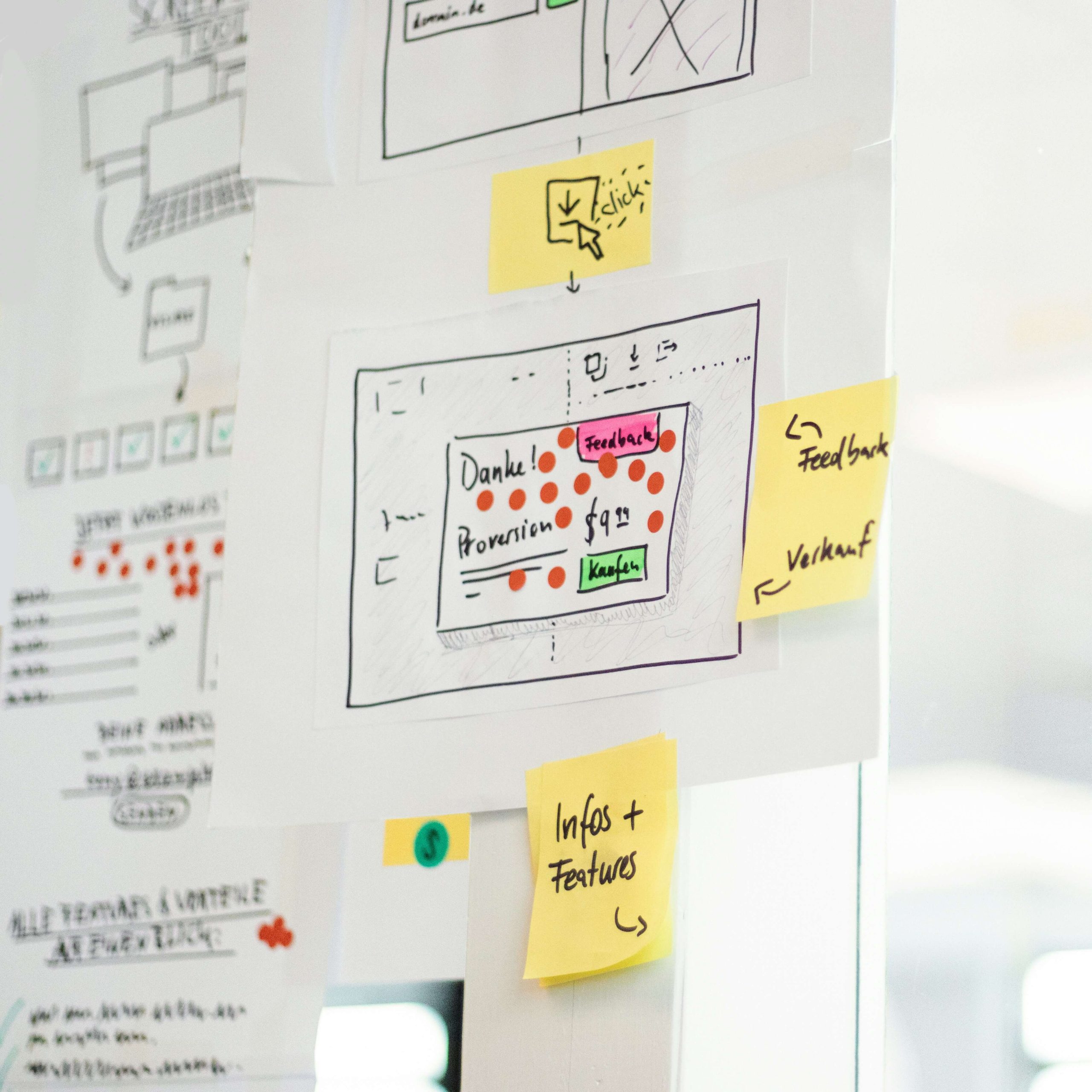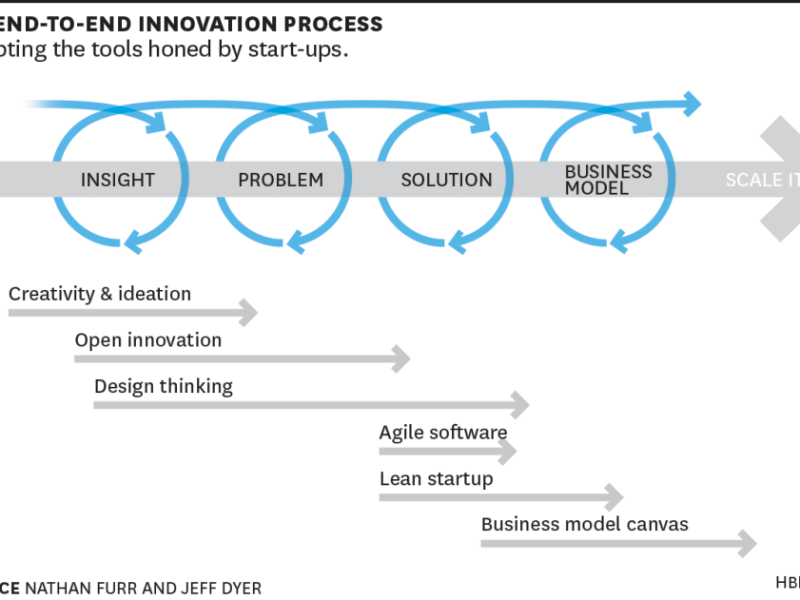A UX Designer’s Guide to Prototyping, Experimentation, and Innovation
Every groundbreaking product or service begins as a flicker of an idea. But the chasm between imagination and execution is where most visions die. As a UX designer with over two decades of experience, I’ve seen teams stumble not from a lack of creativity, but from a failure to systematize innovation.
This blog post distills actionable strategies to transform ideas into tangible outcomes using design thinking, rapid prototyping, and controlled experimentation. Whether you’re refining a startup concept or leading enterprise innovation, these methods will help you bridge the gap between ideas and action.
Why Execution Matters More Than Ideas
Ideas are cheap; execution is everything. Consider Airbnb’s origin story: a simple prototype (a website for renting air mattresses) validated demand for peer-to-peer lodging. Similarly, Dropbox’s MVP—a explainer video—secured 75,000 signups overnight. These successes weren’t born from flawless ideas but from structured processes that tested assumptions early and often.
The 5-Week Framework: From Ideation to Radical Innovation
The From Ideas to Action framework teaches a battle-tested framework to:
- Frame ideas as experiments
- Build rough prototypes to gather feedback
- Iterate based on evidence, not ego
- Scale from incremental tweaks to disruptive innovation
Let’s break down the process.
1. Turn Ideas into Products: A Repeatable Process
Ideation: Quantity Over Quality
Great ideas emerge from volume. IDEO’s legendary brainstorming rules—like “defer judgment” and “encourage wild ideas”—unlock creativity. For example, their work on the first Apple Mouse involved sketching hundreds of concepts, from trackballs to foot pedals, before landing on the iconic design.
- Toolkit: Use Miro or MURAL for digital collaboration.
- Framework: Stanford d.school’s “How Might We” questions reframe challenges as opportunities.
Prototyping: Rough, Rapid, and Relentless
Prototypes are not deliverables—they’re learning tools. At IDEO, “quick and dirty” prototypes (like cardboard models or paper interfaces) surface flaws early. For instance, when designing a hospital IV system, nurses interacted with foam-core prototypes, revealing ergonomic issues missed in blueprints.
- Tools: Figma (digital), Marvel (mobile), or even paper sketches.
- Case Study: Airbnb’s early prototypes tested trust-building features, leading to their signature review system.
Iteration: Fail Fast, Learn Faster
Tesla’s Cybertruck reveal (where a “shatterproof” window cracked onstage) became a viral lesson in public iteration. By embracing failure, Tesla gathered real-time feedback and doubled pre-orders.
- Framework: Build-Measure-Learn (Lean Startup).
- Tool: UsabilityHub for rapid user testing.
2. IDEO’s Brainstorming Secrets
IDEO’s seven rules for brainstorming are non-negotiable:
- Defer judgment
- Encourage wild ideas
- Build on others’ ideas
- Stay focused
- One conversation at a time
- Be visual
- Go for quantity
Pro Tip: Use “Yes, and…” (improvisation’s golden rule) to amplify ideas.
3. Prototyping for Customer Insights
Low-Fidelity vs. High-Fidelity
- Low-fi: Paper wireframes, storyboards, or Wizard of Oz prototypes (e.g., a fake checkout flow).
- High-fi: Interactive Figma prototypes or 3D-printed models.
Case Study: Dropbox’s MVP was a video demoing a nonexistent product. It validated demand before a single line of code was written.
Gathering Feedback
- Tools: Hotjar for heatmaps, UserTesting.com for live sessions.
- Tactic: Ask users, “What frustrates you?” instead of “Do you like this?”
4. Experimentation: Lower Risk, Amplify Learning
Run Small, Scrappy Experiments
Google’s “20% time” policy led to Gmail and AdSense. Similarly, Amazon’s “two-pizza teams” keep experiments lean.
- Framework: Google’s Design Sprint (GV) condenses months of work into 5 days.
- Tool: Optimizely for A/B testing.
Hypothesis-Driven Development
Frame tests as hypotheses:
- “We believe [X] will result in [Y].”
- Measure success with KPIs like conversion rates or task completion times.
Example: Booking.com runs 1,000+ simultaneous A/B tests to refine user flows.
5. Building a Culture of Experimentation
Psychological Safety
Google’s Project Aristotle found that psychological safety—where teams feel safe to fail—is the #1 predictor of success.
- Tactic: Host “failure post-mortems” to celebrate lessons learned.
- Tool: Retrium for retrospective meetings.
Reward Curiosity, Not Just Results
Pixar’s “Braintrust” meetings critique work without hierarchy. Similarly, Atlassian’s ShipIt Days give teams 24 hours to build anything.
Key Skills for Modern Innovators
- Brainstorming: Master facilitation and divergent thinking.
- Prototyping: Balance speed and fidelity.
- Experimentation: Design tests that isolate variables.
Tools & Frameworks
| Category | Tools | Frameworks |
|---|---|---|
| Ideation | Miro, Stormboard | Design Thinking (d.school) |
| Prototyping | Figma, Proto.io, Framer | Rapid Prototyping (IDEO) |
| Experimentation | Optimizely, Google Analytics | Lean Startup, Design Sprint (GV) |
| Collaboration | Slack, Notion | Agile, Scrum |
Conclusion: Start Small, Think Big
Innovation isn’t a lightning strike—it’s a campfire built from tiny sparks. By embracing prototyping, experimentation, and iteration, you’ll transform vague ideas into impactful solutions.
Further Reading:
The image belongs to NEW DATA SERVICES on Unsplash


